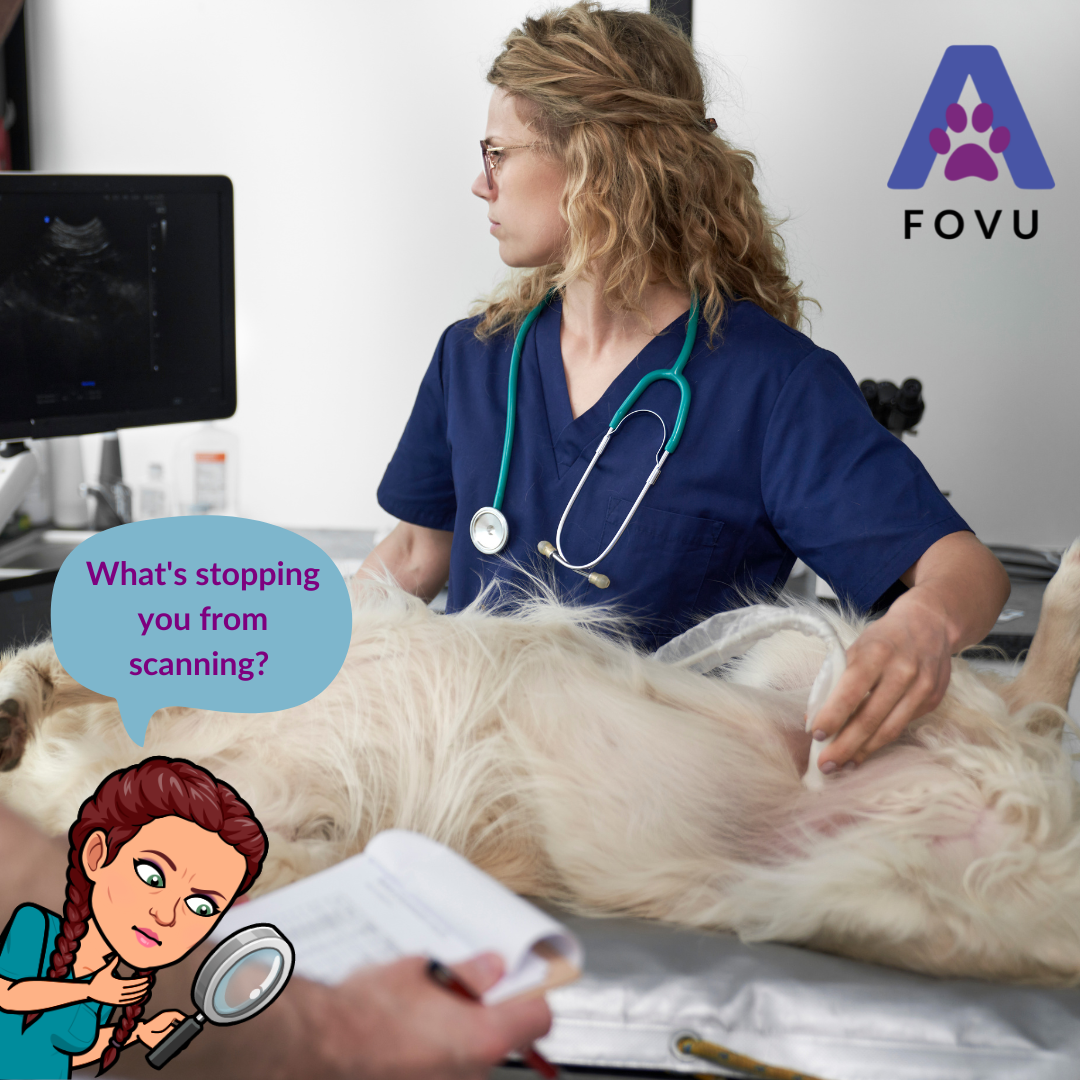Removing Obstacles to Practice Scanning

One of the most common barriers I hear from vets who want to learn ultrasound is a lack of time or opportunity. The truth is that time is not flexible; we all get the same amount, and we can’t control that.
What we can control is what we prioritise in that time. Don't get me wrong, I'm a mother of three, so I know that we can't always prioritise things in the order we’d like to, but I know from experience that small changes can make a big difference, especially when it comes to learning a new skill.
So here are my top tips for prioritising ultrasound as a skill to practice in your normal working day.
1. Make it easy to scan
Keep your ultrasound machine out and ready to scan. This might mean in a dedicated room. Is it easily accessible, or do you have to move things, get it out of a bag etc?
Maybe it would be better to have it set up where you prepare patients for surgery. Then you could scan patients who are already clipped. Also, if you find something unusual, you will get to assess it quickly when you perform the surgery.
2. Create a habit of practice
Switch the machine on when you finish consults. Sometimes we would like to just pop the probe on something quickly but wait for the machine to switch on and the moment has passed. If the barrier of switching it on is removed, then we might be more inclined to use it. It’s a simple thing to do, switch the machine on at the end of consults or before surgery starts.
3. Find a friend to help you
By this, I mean a willing scanning dog, whether that’s your own or a colleague’s dog. Schedule when you can bring them to your practice-obviously, this will often trigger a busy day, but if you schedule it regularly enough, then sometimes there will be time!
4. Keep it simple
You don’t have to learn it all in one go. Start with something small–whether that’s performing an abdominal FAST scan once a day/week or scanning a single organ systematically regularly.
This will teach you what normal is and hone those imperceptible skills such as hand-eye-screen-knobs coordination. Keeping it simple will make it more likely to happen and help you take leaps and bounds with small steps forward.
5. Banish negative thoughts
When you get a case that would benefit from ultrasound, try and catch yourself if you hear yourself saying any of these phrases.
“X would do a better ultrasound than me; I’ll wait until they’re available."
“My scanning skills are not worth charging for”.
”It’s not fair on the patient to be sedated for my scanning skills."
These are all self-limiting beliefs and will stop you from learning and progressing. Just do the ultrasound!
6. Plan for time to practice
Scheduled tasks are more likely to be done than unplanned ones. Schedule some time to practise scanning and organise a willing dog if you haven't already done so. Waiting for the right time and the right patient rarely happens when we need it the most; therefore, you must be confident and creative with what you can control.
To help you with your journey with ultrasound, you can get your FREE Veterinary Ultrasound for Complete Beginners eBook from FOVU here.
Or you can follow us on Facebook and Instagram.





)
)
)
)
)
)
)
)
)
)
)
)
)
)
)
)
)
)
)
)
)
)
)
)